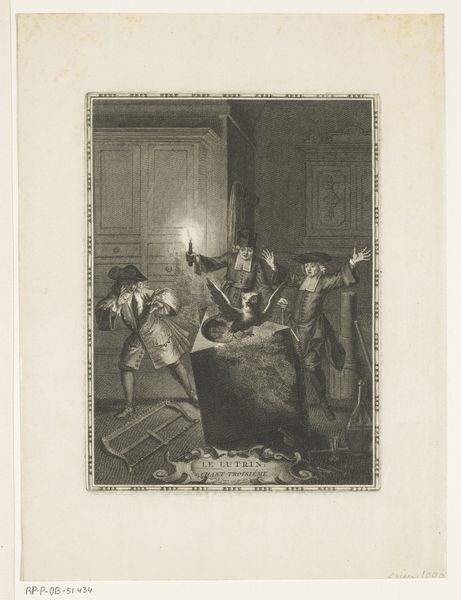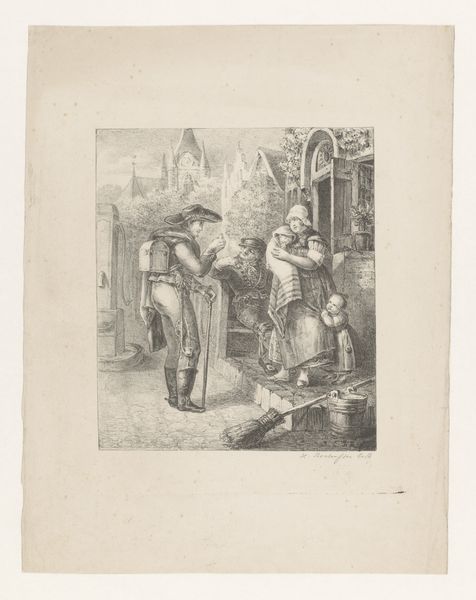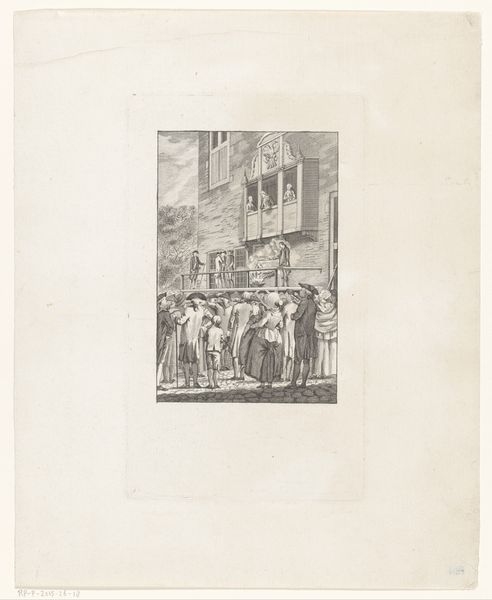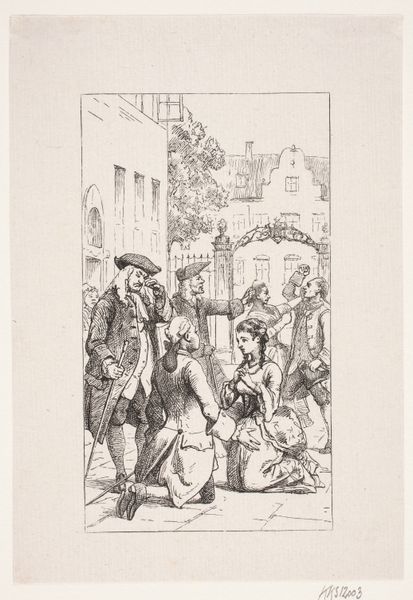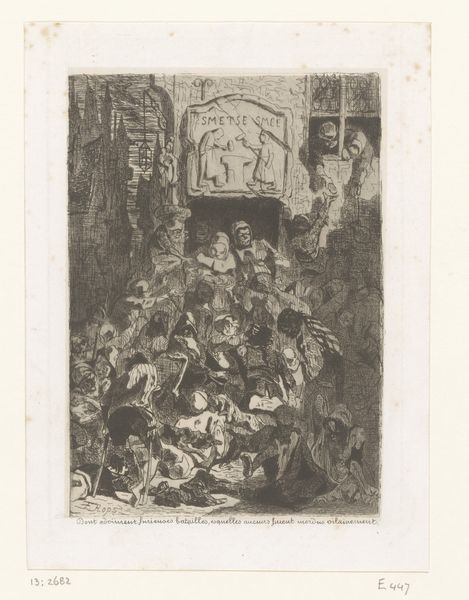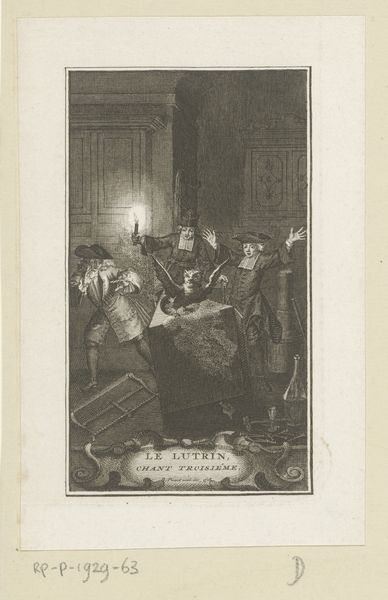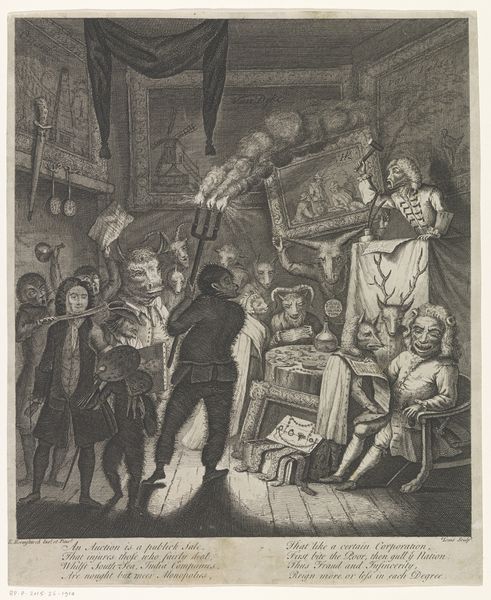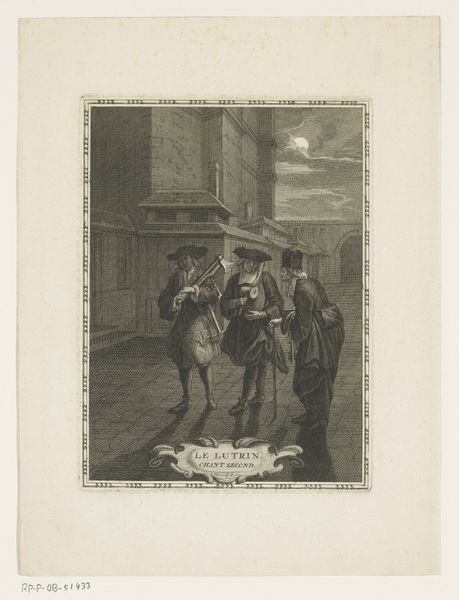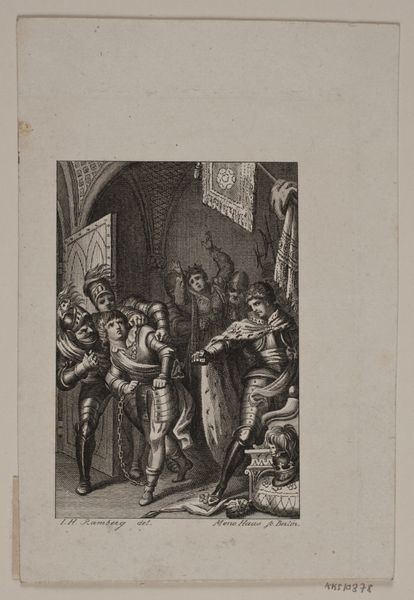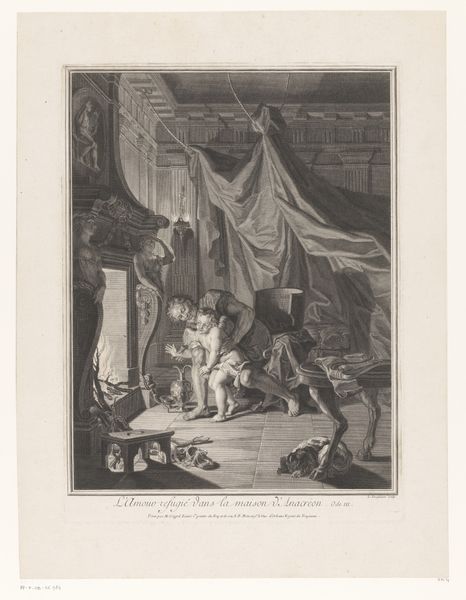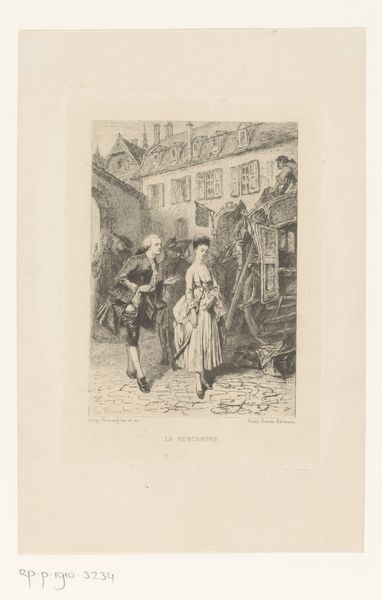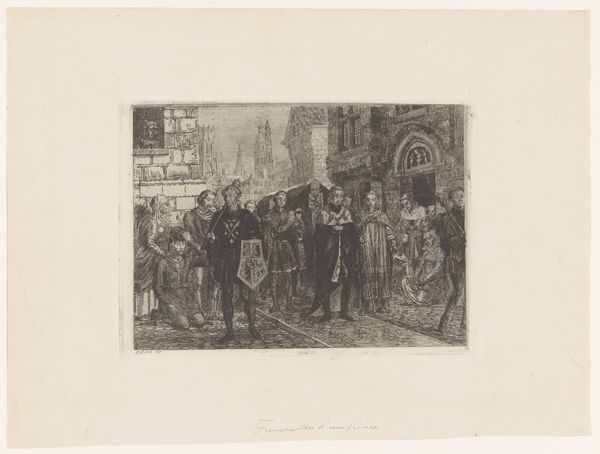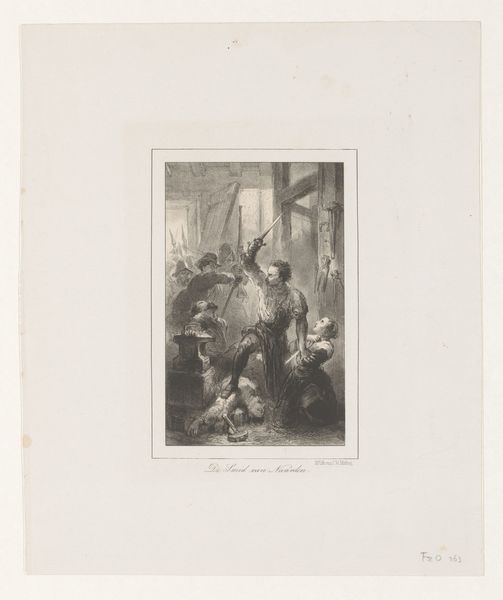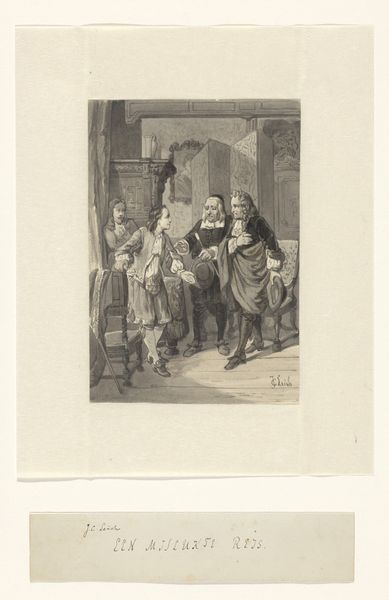
Nachtscène waarin een man een plek op de grond aanwijst voor de gendarmerie 1872
0:00
0:00
print, etching
#
narrative-art
# print
#
etching
#
intimism
#
cityscape
#
genre-painting
Dimensions: height 154 mm, width 110 mm
Copyright: Rijks Museum: Open Domain
Curator: What strikes me first about this print, "Night Scene Depicting a Man Pointing Out a Spot on the Ground to the Gendarmes," created by Adrien Aubry around 1872, is the drama packed into such a small, monochromatic space. It's almost theatrical. Editor: Absolutely. There's a definite air of intrigue, wouldn’t you say? The use of light and shadow immediately draws the eye, spotlighting a central figure amidst what appears to be a furtive encounter. But knowing that Aubry was working in the post-Commune era adds another layer. How much do you think the public role of the Gendarmerie figures here? Curator: Enormously. This isn't just a snapshot of a city street; it's a commentary. Aubry, I feel, is capturing the uneasy relationship between the citizens and the authorities. That pointing gesture, under the dim lantern light, speaks volumes about collaboration or coercion – who’s leading who? Editor: The composition certainly implies a power dynamic. The Gendarmes, stern and numerous, stand poised. This etching captures the vulnerability of the individual against state apparatus and is emblematic of a period where images played an instrumental part in articulating political views. The weight of history, literally etched into this tiny plate. Curator: You know, when I look closely, it feels so immediate. It's more than political commentary. This also hints at a feeling of, what we now term, Intimism. He pulls you right into the damp cobbled streets and whispers, "something is not quite right here". Editor: That interplay between public duty and personal anxiety certainly gives this print enduring power. This piece feels both intimate and like a broad pronouncement of historical tensions at play during its moment. Curator: Exactly. And I feel that emotional and social tensions are delicately balanced here, inviting us to question our perception of authority and citizenship. It makes you ponder what 'justice' really looked like on those cobbled streets of Paris back then. Editor: Agreed. "Night Scene..." speaks to the past but continues to resonate because it makes us conscious of similar political narratives—and our role in interpreting these types of scenarios.
Comments
No comments
Be the first to comment and join the conversation on the ultimate creative platform.
